|
PART TWO
The oriental
renaissance of the 19th century
The philosophers of the 18th century were disenchanted with the
state of civilization they saw around them. Praise of another
culture became popular. China was one of them. Chinoisery appeared
on furniture and porcelain. Operas and plays had Chinese themes.
Some even considered the wisdom of Confucius superior to the tenets
of Christianity.
The fascination with the Orient reached its peak during Romanticism
(1790-1815).
Western scholars had begun to study Sanskrit in the 17th century.
But it was not until the 19th century that translations of Indian
scriptures became available in the West.
French scholars took the lead. Along with Sanskrit (1785) other
languages were deciphered: Pahlavi in 1793, cuneiforms in 1803,
hieroglyphs in 1822, and Avestan in 1832. The path was now paved to
the treasures of Eastern thought. Authentic
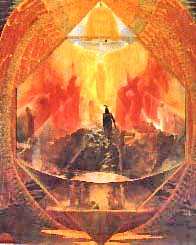 texts
of Buddhism were discovered by Hodgson in 1821 while living in
Nepal. He obtained 400 Sanskrit and Tibetan volumes. A Pali grammar
was published in 1826 by Burnouf and Lassen. texts
of Buddhism were discovered by Hodgson in 1821 while living in
Nepal. He obtained 400 Sanskrit and Tibetan volumes. A Pali grammar
was published in 1826 by Burnouf and Lassen.
A young Hungarian, Csoma de Koros, went so far as to enter monastic
life in Tibet in 1850. Prinsep deciphered inscriptions of the Indian
king Ashoka between 1834 and 1837.
The study of Islam and the Far East was well on its way. Authorities
in Semitic, Indic and Chinese published its literature. Translations
of pre-Islamic writers, Persian poets and mystics, along with
Chinese poetry were printed one after the other.
For the first time Oriental religious philosophy became generally
accessible. It led to a veritable Oriental Renaissance. The
philosophy and way of thought contained in the Eastern scriptures
astounded the Western cultural elite towards the middle of the 19th
century and influenced such philosophers and writers as
Schopenhauer, Goethe, Heine, Nietzsche, Shelley, Emerson, Baudelaire
and de Balzac.
A greater respect grew for Eastern religions now that their great
works appeared in print. In 1785 Wilkins published the Bhagavad Gita.
Translations of the Rig Veda, Mahabharata, Upanishads, Vishnu Purana
and Lotus sutra followed, along with an "Introduction à l'Histoire
du Buddhisme Indien" by Burnouf.
The spiritual approach of the re-discovered religions was felt as a
relief from the prevalent Christian dogmatism. The idea emerged of
the unity behind all religions.
Back to
Contents
Spiritualism
In the wake of change of values some spiritual movements gained a
fresh following.
Mesmerism was to reach its peak in the middle of the nineteenth
century. Fluïdism and somnabulism were being studied all over
Europe. Its healing method through "animal magnetism" and work with
trance-induced states was seen as another proof that mind could rule
matter. Spirit involvement in healing was implied.
Some of these ideas found their way in the Christian Science and New
Thought movements.
Andrew Jackson Davis (1826-1910, later known as "the Poughkeepsie
seer") became one of the founders of modern Spiritualism in the
United States. Like the later Edgar Cayce he could give an accurate
diagnosis of a patient's disease whilst under induced "magnetic
sleep'. A believer in mesmerism he developed a spiritualistic
philosophy of his own.
Meanwhile Spiritualism got a fresh impulse. When in 1848 Karl Marx
began his "Kommunistisch Manifest" with : "A ghost wanders through
Europe", spooks made a stir in Hydesville (N.Y., U.S.A.). Daughters
of the Fox family managed to communicate with the spirit of a dead
man by means of raps. The press saw to it that these events became
nationwide news.
Spiritualism came in the wake of the inventions of the telegraph and
telephone that made it possible to send messages over
 long
distances. It was presumed that communication with the dead -
nowadays called channeling - might be discovered soon. The
sensational reports of the Fox family communicating with the dead
made holding seances at home a popular pastime. long
distances. It was presumed that communication with the dead -
nowadays called channeling - might be discovered soon. The
sensational reports of the Fox family communicating with the dead
made holding seances at home a popular pastime.
Even president Lincoln (photo) had contact with mediums and took
part in seances. At the European courts the situation was no less
different. The spiritualistic movement was under way, claiming
millions of believers.
Back to
Contents
Theosophy
It was Madame H.P.Blavatsky (HPB for insiders) who forged the
European esoteric tradition, Spiritualism and the Oriental
Renaissance into one coherent system that took on aspects of a
religion. She provided it with a secret doctrine, a martyr
(herself), a mysterious origin and finally, but not in the least,
she gave it the form of a (semi-religious) fraternity. She claimed
to have received from Masters of Wisdom a key to the mysteries long
kept secret from mankind. This White Brotherhood - these pioneers of
mankind - were thought to reincarnate at all times to enlighten
mankind with their advanced ideals and culture.
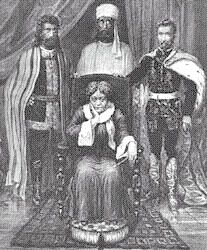
H.P.Blavatsky and her
masters Morya, Koot Hoomi and Prince Ragoczy
Thus she presented a remarkable and
revolutionary concept of life in the universe. At the same time she
gave man a new purpose of living based on Indian religious and
philosophical traditions.
In spite of ridicule these ideas and approach made a deep impression
on late nineteenth century's society and is still the foundation of
the New Age movement.
Yet, without her being aware of it, HPB's philosophy was imbued with
the spirit of the age. In her system the intellect could unriddle
the mysteries of the universe. Her motto "There is no religion
higher than truth" was aimed more at intellectual exploration, than
intuitive insights gathered through meditation and contemplation as
was the case with mystical theosophy (without capital!) of former
ages. In all fairness it should be said that in later years
Theosophy stressed the importance of development of intuitive
insight through the practice of Eastern disciplines such as Raja
yoga and meditation.
Of the original purpose of the Theosophical Society when it was
founded in 1875, "the study of ancient and modern religions,
philosophies and sciences", little remained. Instead it became an
exploration of the views of Mme Blavatsky on this subject. These
were strengthened to a great extent by her claim that she was guided
by Masters. These great men with their extraordinary powers
purportedly communicated with her telepathically as well as in
"precipitated" letters, which came to her in mysterious ways. At
first she received them from the Hermetic Brotherhood of Luxor in
Egypt. Later they came from the White Brotherhood in far away Tibet.
Proof of existence of such Mahatma's, as portrayed by her, has never
been found. However, there is a case for acquaintances of HPB, with
spiritual qualities less than alleged, having stood model for them.
(See "The Masters Revealed", below).
HPB' view of life appears to have been strongly influenced by
Maçonic tradition she came in contact with in childhood and from
members of lodges, especially in Cairo and Paris before she moved to
the U.S.A. The Mahatma Letters have the appearance of psychic
communications, and are strongly influenced by her personal
circumstances.
This in itself should not detract from their value. After all parts
of the Old Testament fall in the same category.
Mme Blavatsky gave mankind a grand vision of the universe as opposed
to the corset of the narrow-minded dogmatic outlook of Christianity
at the time. It was generally believed then that creation took place
some six thousand years ago. She countered by postulating that it
was billions of years ago and that mankind lived for millions of
years on Earth. She introduced also the concept of a holistic
universe. The popularity of present-day ideas of reincarnation and
karma - now household words - can be traced back to her.
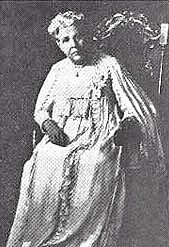
Annie Besant
At the time that she was
hounded by scandalous rumours she found a worthy successor in Annie
Besant in 1889. A woman of extraordinary talents and a great orator.
Historian Arthur Nethercott writes:
"During her eighty-five years Annie
Besant lived many lives, some of them so incredible that it
seems impossible they were lived at all."
Besides giving fresh impetous to
Theosophy, she was also to give India back its respect for its own
culture. She was a powerful force in the campaign for Indian Home
Rule before Gandhi and later Nehru took over.
Back to
Contents
Krishnamurti
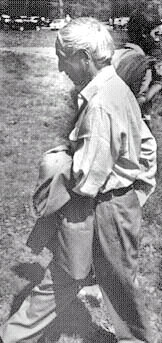
Krishnamurti,
Saanen 1967
She is also known to have taken care of the education of a very
special Indian boy Jiddu Krishnamurti . Son of an Indian
Theosophist, Jiddu's gift was discovered by Annie Besant's closest
colleague C.W.Leadbeater in 1909. To her dismay after reaching
maturity he became to advocate quite a different approach to life
than Theosophists did. His disbanding in 1929 the Order of the Star
in the East, especially founded for him, came as a blow to the
Theosophical Movement. It had already been plagued by split-ups.
Theosophy became after the thirties a shadow of the former
mind-swaying movement. Its role was taken over by others.
Back to
Contents
The
Fourth Way
One of them was founded by George Ivanovitch Gurdjieff (photo). The
life-history of this spiritual teacher is as much shrouded in
mystery as that of Mme. Blavatsky. In fact they had many
similarities. It is assumed that he was born in Alexandropol (Repl.
of Armenia), around the time that the Theosophical Society was
formed in 1875, from a Greek father and an Armenian mother.
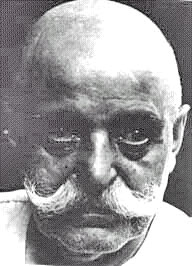
Gurdjieff
Gurdjieff claimed that as a young man he
had travelled extensively. He had even reached Tibet in 1902, much
like HPB. Again some believed that he was a Tsarist agent. In his
book Meetings with Remarkable Men Gurdjieff describes his quest for
Hidden Masters of Wisdom, which took him to Egypt (like HPB) and
thence to Central Asia and Northern India.
His later training and teachings were the gist of the instruction he
said to have received from various masters in esoteric schools. They
are a departure from the Theosophic tradition. Yet, as most
teachings do in order to catch on, they breath the changed spirit of
the era.
Gurdjieff's instructions were aimed at the harmonious development of
the supposed centres in man. It came at a time that Freud's
psychology was being discovered.
When Russian ballet, notably that of Diaghilev made a great impact
in the West, Gurdjieff introduced his revolutionary form of ballet.
So Gurdjieff's system took advantage of fads and fancies of his
lifetime.
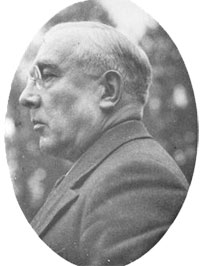
Ouspensky
A noted Russian author Peter Damien Ouspensky, who had departed from
Theosophical thought and had explored the time dimension in his book
The Fourth Dimension, met Gurdjieff in 1912 in Moscow. Gurdjieff was
to present his ballet there. Ouspensky became impressed immediately
by the mysterious figure, but never trusted him completely either.
In In Search of the Miraculous Ouspensky gave an account of the
unusual training and adventures they went through at the time of the
Russian revolution. Finally in 1919 both of them arrived in Europe
and settled in France and Great Britain respectively. By that time
they had grown apart and initiated their own schools.
Gurdjieff established the Institute for the Harmonius Development of
Man in chateau du Prieuré des Basses-Loges, France, in 1922. It
became notorious for its harsh treatment of followers. This
Gurdjieff considered necessary. He termed it voluntary conscious
suffering, essential for his devotees, who were still asleep, to
wake up to reality.
More of such training centres would follow by rival Gurdjieff
followers. One of them being John G. Bennett who was to introduce
Subud to the West in 1957.
Back to
Contents
New Age
- a rediscovery
What became known as the New Age movement injected new life into
almost forgotten traditions at a time that Christian faith had lost
its meaning for the younger generation.
New Age's greatest growth has been in the United States. This is not
surprising, as it was based on already existent, but dormant,
religious/philosophical movements which had come to a head in the
nineteenth century.
As we have seen Oriental religion and the European occult traditions
had made a great impact on the intellectual elite of America in the
nineteenth century . The second president John Adams(1767-1848) is
known for his fascination with Oriental thought. He was a voracious
reader of the translations of Eastern religious works.
The leaders who stood at the craddle of the birth of the nation were
influenced by Masonic, Spiritualistic and Rosicrucian thought. "A
New Order of the Age begins" proclaims the reverse side of the Great
Seal of the United States.
Eight signatories of the Declaration of Independence were
Freemasons, amongst whom Benjamin Franklin (see image) and George
Washington, as were sixteen subsequent presidents.
Prominent American writers, who became known as the
Transcendentalists, were deeply influenced by Eastern thought. Ralph
Waldo Emerson(1803-1882) was one of the great admirers of Oriental
religious classics, notably the Bhagavad Gita. His secretary, Henry
David Thoreau wrote Walden, a source of inspiration for hippies a
century later.
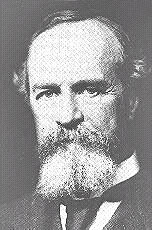
William James
One of the foremost American
psychologists of the time William James (1842-1910) published in
1902 his pioneering Varieties of Religious Experience, building a
bridge between psychology and religion. It has become the
cornerstone of scientific study of religion to this day. Prof. James
also called for a serious study of paranormal phenomena and played a
leading part in the foundation in 1885 of the American Society for
Psychical Research. /p>
A noteworthy event was the Parliament of Religions held in Chicago
in 1893. It was the first time that a platform of this kind had been
organized. Before an audience of four thousand people leaders of the
great religions presented their views on life. One of the results
was a greater appreciation for Oriental religions, who were
well-represented. Swami Vivekenanda expounded inner Hinduism; Soyen
Shaku, abbot of a Japanese Rinzai monastry: Zen-Buddhism. Anagarika
Dharmapala established after the congress an American branch of the
Maha Bodhi Society, the first Buddhist society in the West.
This was merely the beginning of a flow of Eastern teachings and
guru's to effect Western thinking.
At the same time the Western esoteric tradition also found a
following in new schools, movements and cults. Too numerous to go
into here presently.
New Age was primarily a movement amongst the younger generation in
the late sixties that demanded to play a greater part in all aspects
of society. Through the use of mind-expanding drugs a greater
reality was being unfolded to them that called for other
explanations than traditional religion could give. Its concepts of
God and Love were too narrow to accommodate the overwhelming
experiences they had on their trips. Transcendence, self-realisation,
yoga, meditation, all part of existing traditions, were being
rediscovered and practised.
Originally it had been given the name: the Age of Aquarius to
signify the new era of spiritual enfoldment as foretold in
astrology.
In the early seventies, when the movement was well on its way, the
name New Age was adopted. Of course it was a term with whiskers on.
William Blake schreef al in 1804-08, in zijn voorwoord van Milton: "Rouze
up, O Young Men of the New Age!
As might be expected New Age unleashed counter-forces from the side
of fundamentalist Christian denominations. Especially after Marilyn
Ferguson wrote in her book The Aquarian Conspiracy that the
fraternity dedicated to this philosophy constituted a worldwide
network. Dedicated persons would recognize each other in a few
minutes without secret signs, but merely by a short exchange of
ideas. This was seen as a sort of Satanic conspiracy. Especially
people who followed so-called occult practices came under suspicion.
The orthodox Christian establishment found allies in the equally
dogmatic Sceptics and members of CSICOP in their efforts to suppress
and misrepresent New Age and occultism in the media.
But in effect it were the Christians who started misrepresenting the
life of Jesus. This is the conclusion of some modern biblical
scholars. The oldest document of the Jesus tradition that survived
is that of the Thomas gospel, part of
the Nag Hammadi papers
discovered in Egypt in 1945. In it a gnostic Jesus comes forward
that has more affinity with the New Age than the fundamentalism of
extremist Christianity.
Christians consider the Bible the word of God whereas a little
research shows that the oldest 4th century codices we have is the
product of countless copying errors, inconsistencies, alterations
and invention of fairy tale-like stories, often borrowed from pagan
sources, to instill awe in the figure of Jesus who supposedly
endorsed their dogmatic views but who may have been a heretic
himself. For one thing, the gospels were not written by the
apostles. The most important event in Jesus life, the crucifixion,
may not even have taken place. It is not mentioned in the oldest
first century documents. The later Christians instilled fear in
followers with their prediction of the end of the world to come in
in their lifetime, started bloody persecution of heretics and Jews.
Thus they made a mockery of what their supposed founder taught.
New Age has not traveled to the end of the road yet. It is reaching
a stage of maturity in which wheat is being separated from the corn.
Yet, it still comprises a broad spectrum of activities from the
commercial rip-off to unselfish dedication to serve mankind
spiritually. Many do not wish to be associated with the name because
it reminds them of the turbulence associated with the uprising of
the younger generation in the late sixties and the lamentable drug
excrescences.
One may pray that the movement will sustain its original purity and
raise high the spirit of new generations, giving it an immense vista
of life and a purpose to live for.
Back to
Contents
Literature
-
Blavatsky, H.P.: The Key to
Theosophy
-
Braden, Charles: Spirits in
Rebellion; the Rise and Development of New Thought.(1963)
-
Darnton, R.: Mesmerism and the
end of Enlightenment in France (1968)
-
Dutton, E.P.: The Theosophical
movement
-
Faivre, A.: Access to Western
Esotericism (1994)
-
Ferguson, Marilyn: The Aquarian
Conspiracy (1980)
-
Freke, Timothy & Gandy: The
Jesus Mysteries (1999)
-
Freke, Timothy & Gandy: The
Hermetica (1997)
-
Godwin, J.: The Theosophical
Enlightenment (1994)
-
Gurdjieff, G.I.: Meetings with
Remarkable Men
-
Hanegraaff, W.J.: New Age
religion and Western culture. Esotericism in the mirror of
secular thought (New York 1998)
-
Hanegraaff, W.J. (ed):
Dictionary of Gnosis ans Western Esoterism (2005)
-
Heelas, Paul: The New Age
Movement. (1996)
-
Hutin, Serge: L'Alchimie
-
Israel, J. I.: Radical
enlightenment : philosophy and the making of modernity
1650-1750 (2001)
-
Jackson, Carl T.: The Oriental
Religions and American Thought (1981)
-
Johnson, K.Paul: The Masters
Revealed (1994)
-
Lutyens, Mary: The Years of
awakening
-
Meade, Marion: H.P.Blavatsky.
Woman behind the myth.
-
Merkur, D. : The Psychedelic
Sacrament: Manna, Meditation, and Mystical Experience (2001)
-
Needleman, Jacob: The new
religions (1984)
-
Nethercot, Arthur H.: The first
five lives of Annie Besant
-
Nethercot, Arthur H : The last
four lives of Annie Besant
-
Ouspensky, P.D. : In Search of
the Miraculous
-
Pagels, Elaine : The Gnostic
Gospels (1979)
-
Pruyser, Paul W.: Between belief
and unbelief (1974)
-
Rawlinson: The book of
enlightened masters (1997)
-
Roberts, J.M.: The mythology of
the Secret Societies (1972)
-
Schwab, Raymond: The Oriental
Renaissance (1984)
-
Spangler, David: Revelation: The
Birth of a New Age (1976)
-
Stevenson, David: The origins of
Freemasonry (1988)
-
Stevenson, David: The first
Freemasons. Scotland's early lodges and their members (1988)
-
Washington, Peter: Madame
Blavatsky's Baboon (1995)
-
Wilson, Colin: From Atlantis to
the Sphinx (1996)
-
Yates, Frances A.: The occult
philosophy in the Elizabethan Age (1979)
Back to
Contents
|
 texts
of Buddhism were discovered by Hodgson in 1821 while living in
Nepal. He obtained 400 Sanskrit and Tibetan volumes. A Pali grammar
was published in 1826 by Burnouf and Lassen.
texts
of Buddhism were discovered by Hodgson in 1821 while living in
Nepal. He obtained 400 Sanskrit and Tibetan volumes. A Pali grammar
was published in 1826 by Burnouf and Lassen. long
distances. It was presumed that communication with the dead -
nowadays called channeling - might be discovered soon. The
sensational reports of the Fox family communicating with the dead
made holding seances at home a popular pastime.
long
distances. It was presumed that communication with the dead -
nowadays called channeling - might be discovered soon. The
sensational reports of the Fox family communicating with the dead
made holding seances at home a popular pastime.




